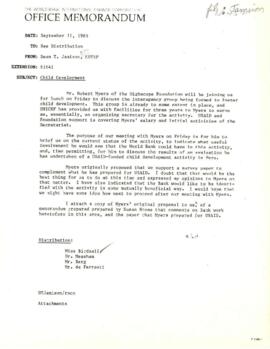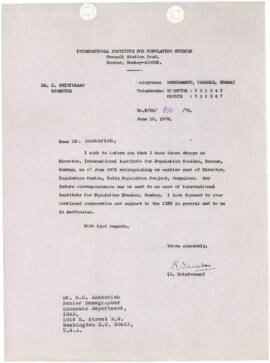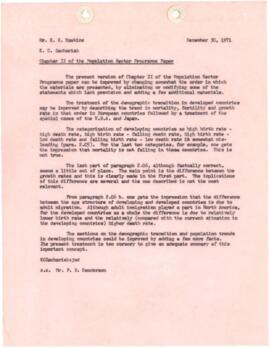Identity area
Reference code
Title
Date(s)
- 1963-2001 (predominant 1972 - 2000) (Creation)
Level of description
Fonds
Extent and medium
190.23 linear feet of textual records; 43 audiocassettes; 2 video cassettes; 3 3.5" computer disks
Context area
Name of creator
Biographical history
Sector departments were created as part of a World Bank-wide reorganization in 1972. The sector departments were responsible for improving and maintaining the quality of Bank lending and related operations through activities such as: sector policy and guideline development; support and review of operations; recruitment assistance; staff development and training; and liaison with external organizations. Although some departments like the population sector initially had operational responsibility to identify, prepare, appraise, and supervise projects until a Bank-wide 1987 reorganization, sector departments were generally not responsible for leading project lending operations and member country relations. The Bank?s projects and member country relations were the responsibility of regional vice presidencies (RVPs). See the related units of description note below for the location of records relating to World Bank operations and the RVPs.
The World Bank's entry into the population sector was initiated by President Robert S. McNamara in his first address to the Board of Governors in September 1968. McNamara stated that rapid population growth was "one of the greatest barriers to the economic growth and social well-being of our member states". Functional responsibility for population-related activities was first articulated in the organizational structure of the World Bank after the November 1, 1968 reorganization of the Projects Department (PRJ). The PRJ's five divisions were upgraded to the department level and began reporting to the director of projects (DRP). In addition, three new departments were created, including the Population Projects Department (PNP). The department did not begin operation until the following year, when its first director, Dr. Kandiah Kanagaratnam, was appointed on Sept. 18, 1969 and served in this position until 1979. Most of the initial research and start - up work for the department done prior to the appointment of the director was carried out in the Population Studies Division of the Economics Department (ECDPO).
The Bank's first population loan was made to Jamaica in 1970 for a family planning program. This and subsequent loans: supported services related to population management; created awareness of and provided information about population issues; and devised and implemented incentives and disincentives aimed at encouraging smaller families. The Population Projects Department was assigned responsibility for:
-
providing advice on population sector problems to the area departments;
-
preparing pre - investment studies to identify developmental priorities in the population sector of member countries;
-
appraising proposed projects, or assisting in the preparation of projects for countries unable to do so;
-
providing operational support in the negotiation and administration of loans and credits, in procurement matters, in selecting consultants and in writing terms of reference;
-
supervising projects as regards their operation;
-
monitoring developments in the population sector; and
-
cooperating with other international agencies (i.e. World Health Organization [WHO], United Nations Educational, Scientific and Cultural Organization [UNESCO]) on programs of common interest.
At the time of its establishment, the department had no divisional structure. The first division of the Population Projects Department (PNPD1) was established on January 1, 1971. On July 1, 1972, a Nutrition Unit (PNPD2) was created, thereby marking the beginning of the Bank's work in the nutrition sector. The department was subsequently renamed the Population and Nutrition Projects Department but retained its original acronym.
The department's Population Planning sector working paper published in March 1972 outlined the Bank's efforts to help developing country members reduce population growth rates, projected population growth over thirty years, and presented its future program of activity in the field. In 1973, the Board convened a population program review panel whose recommendations included strengthening the Bank's influence in population policy, developing "family welfare" population projects to incorporate health and nutrition, and directing the research program to the country-level.
1972 - 1979
The Bank's massive reorganization in October 1972 attempted to more effectively fuse country knowledge with sector skills. Sectors with a sufficient number of experts and an established lending program were largely decentralized; these departments were referred to as Central Projects departments. The majority of the staff of Central Projects departments was dispersed to regional project departments in newly established Regional Vice Presidencies. Smaller departments, such as PNP, remained wholly centralized and continued to provide a complete operational package of technical services to the Regions. This included identifying, appraising and supervising projects, as well as performing advisory and quality control work. These units were known as Central Operating Projects departments. Both Central Projects departments and Central Operating Projects departments reported to the newly created Vice President, Central Projects (CPSVP). The CPSVP replaced the previous DRP and reported to the Senior Vice President, Operations (SVPOP).
On November 1, 1975, the nutrition functions of PNP (PNPD2) were transferred to Agriculture and Rural Development Department (AGR). PNP reverted to its previous title, the Population Projects Department (PNP). On July 1, 1977, the PNP was given the new acronym, POP.
The Bank's entry into health as a distinct area of lending had been gradual, from early support of health elements as part of projects in other sectors - such as rural and urban development, irrigation, education, and water supply and sanitation - to projects encompassing broad health policy and institutional and structural changes. The launch of the Onchocerciasis Control Program in Western Africa in 1974 marked the Bank's first investment in the health sector. The OCP administration program unit operated within the Africa Regional Vice Presidency and was also supported by PNP. PNP management and senior staff attended OCP statutory body and committee meetings, provided technical assistance, and reviewed health project preparation, research evaluation, and other activities.
The Bank adopted a formal health policy in 1974 and the department's 1975 Health Sector Policy Paper was one of the Bank's first efforts to produce and disseminate knowledge on health policy issues. The paper suggested that improvement of health facilities and conditions should become a major development objective. The Bank subsequently increased its activities in the health sector; between 1976 and 1978 it supported health components in 70 projects in 44 countries. In 1976, a formal agreement with the World Health Organization (WHO) was signed and health - related lending began to be coordinated with bilateral donor agencies. Also in 1976, an external advisory panel on population chaired by Dr. Bernard Berelson was appointed to assess the Bank's role in the population field. The panel made 12 recommendations, and nearly all were accepted and implemented by the Bank.
1979 - 1987
In 1979, the Board approved an expanded role in the health sector. As a result, on October 1, 1979, the new Population, Health and Nutrition Department (PHN) was established. John R. Evans was named the Department's first director. The department was assembled from the previous POP, the Nutrition Division of the Agriculture and Rural Development Department (AGRNU) and the Office of the Environment and Health Advisor of the Project Advisory Staff (CPSEH) to provide a unified leadership for these closely related sectors. The PHN would function as a Central Operating Projects department, maintaining responsibility for policy formulation, research and operational support, as well as the planning, direction and supervision of project and sector work. The PHN initially reported to the CPSVP. With the restructuring of the CPS into the Operations Policy Staff (OPS) in February 1982, the Department began reporting to the Vice President, Operations Policy.
On the day of its establishment, the PHN was assigned the operational Divisions I (PHND1) and II (PHND2) and a Policy and Research Unit (PHNPR). PHNPR absorbed the staff of the dissolved Population and Human Resources Division of the Development Economics Department (DEDPH). On September 1, 1981, a third operational division (PHND3) was established. In mid - 1983, the operational divisions were renamed to reflect their regional responsibilities: Division I - South Asia and Eastern Africa (PHND1); Division II - East Asia and Western Africa (PHND2); Division III - Latin America and Europe, Middle East, and Africa (PHND3). On February 1, 1984, the PHNPR was upgraded to a division but maintained its original acronym. The organizational changes in this period and elevation of PHN to a department coincided with a significant growth in staff, productivity, and increased lending.
Similar to the Bank's pre - 1979 involvement in health - related lending, the Bank's role in nutrition had, throughout the 1970s, been primarily limited to aspects of the Bank's lending in related fields such as agriculture, education, and industry. Only four 'freestanding' nutrition projects were approved between 1976 and 1981, the first being to Brazil in 1976. Following the creation of the PHN in 1979, a reassessment of the Bank's role in nutrition was undertaken. This led to an operational work program in September 1980 that directed staff to include explicit nutrition objectives in Bank lending.
With the Bank's operational focus on health established in 1979, there remained an emphasis on the relationship between health and population, specifically family planning as a basic health service. Of the seven health projects approved between FY1981 - 83, four had family planning components, one project was termed health/population, and two were population projects. PHN's shift back towards greater concentration on population began in FY1983-84 in alignment with the 1984 World Development Report focus on population and the International Conference on Population where President Clausen voiced the Bank's commitment to increasing attention on population growth. In the same year, PHNPR launched a policy study on sub-Saharan Africa population growth and policies published in 1986.
In February of the following year, the inaugural Safe Motherhood conference in Nairobi was co-sponsored by the Bank, WHO, and United Nations Population Fund. The 1987 conference led to the Bank's Safe Motherhood initiative and its first commitment to support national programs and international efforts to improve women's health including family planning and maternal and child health. Safe Motherhood is still active as of 2021. Other notable sector activities during the 1980s included the first standalone health sector loan in 1981 to Tunisia for the expansion of basic health services, the 1986 policy study Financing Health Services in Developing Countries: An Agenda for Reform prepared by PHNPR which underscored the need for improved health sector financing and presented instruments for mobilizing resources including user fees.
1987 - 1996
On July 1, 1987, a Bank - wide reorganization resulted in the termination of almost all organizational units. The Vice Presidency, Sector Policy and Research (PRE), was established in May 1987, and began reporting to the senior vice president, Policy, Planning and Research (PPR). The PRE shed all responsibility for managing operational activities and focused completely on operational support, the formulation of Bank - wide sector policies, and overseeing the ex - post evaluation of Bank - wide sector work and lending. The PRE changed its acronym to PRS onJanuary 1, 1990.
At the time of its creation, the PRE had five departments reporting to it including the new Population and Human Resources Department (PHR). This department integrated the functions of PHN and the Education and Training Department (EDT); it also assumed responsibility for activities related to 'strengthening the role of women in development.' The PHR, led by Director Ann O. Hamilton, had four divisions: Education and Employment Division (PHREE); Population, Health and Nutrition Division (PHRHN); Women in Development (PHRWD); and Welfare and Human Resources Division (PHRWH). Anthony R. Measham served as division chief, PHRHN. On July 1, 1992, a Population Policy and Advisory Service Group (PPAS) was established in the Front Office of the department to increase attention to population work. As with all departments in PRE, PHR had no operational responsibilities, and health, nutrition, and population lending activities were concentrated in country departments.
The PHR was responsible for:
-
formulating policies and strategies for human resource development and women in development, and developing new initiatives and Bank products;
-
conducting supporting research, including the improvement of research capabilities in developing countries, and management of external research funded through the Research Support Budget;
-
improving methodology and identifying best practices;
-
performing ex - post evaluation of the Bank's human resources sector work;
-
providing operational support;
-
liaising with non - Bank organizations and professionals in the field;
-
developing household data on living standards; and
-
assisting in the recruitment and training of staff.
On December 1, 1991, President Lewis Preston's first reorganization abolished all senior vice presidencies. The new Sector and Operations Policy Vice Presidency (OSP) was created as a result of this reorganization and adopted functions previously supervised by senior vice presidents. On January 1, 1993, as part of a larger initiative to align the Bank's organization with the priority areas of its poverty reduction effort, the Sector and Operations Policy Vice Presidency (OSP) was terminated. All research activities were removed from the departments in the central vice presidencies, including PHR, and were consolidated under the Chief Economist and Vice President for Development Economics (DECVP). The Policy Research Department (PRD) under DECVP became the principal research arm of the Bank including responsibility for population, health,and nutrition sector research.
OSP was replaced by three new thematic vice presidencies: Human Resources Development and Operations Policy (HRO); Finance and Private Sector Development (FPD); and Environmentally Sustainable Development (ESD).
During this 1993 reorganization, the PHR was terminated and its functions were split between a reconstituted Population, Health and Nutrition Department (PHN) and a new Education and Social Policy Department (ESP). Both of these departments were placed in the HRO vice presidency along with an Operations Policy Department (OPR). The OPR absorbed the functions of: the former Central Operations Department (COD); the International Economic Relations Division (OPRIE); and the UN Office in New York (OPRNY) transferred from the External Relations Department (EXT). The PHN had no divisions but had task - specific teams including a Population Team, Health Team, and Nutrition Team.
On July 1, 1995, HRO became Human Capital Development and Operations Policy (HCO). At this time education, health, nutrition, and populations functions were again combined in a single department named the new Human Development Department (HDD) led by Director David de Ferranti. HDD now consisted of five areas of responsibility that included Education, Implementation, Health, Nutrition, and Population. Each of these teams were led by an adviser/manager; Richard G.A. Feachem for Health, Alan D. Berg for Nutrition, and Thomas W. Merrick for Population.
1996 - 2014
Beginning in September 1996 and into 1997, the thematic Vice Presidencies were reorganized to strike a better balance between country focus and sectoral excellence. The Human Development Network (HDN) was the first to be launched in the Bank-wide reorganization into networks to facilitate sharing of expertise and knowledge. Networks linked Bank-wide communities of staff working in the same field across organizational boundaries and with external partners. The networks formed a virtual overlay on the existing Bank organization, and were intended to link staff working in the same sectors throughout the Bank, whether the staff was located in the Regions, in the Central Vice-Presidencies' Sector Departments, or other Vice-Presidencies.
Each of the three thematic Central Vice-Presidencies was transformed into the central units, or anchors, of each network and consisted of the existing sector departments. On a Bank-wide basis, sector specialists were grouped into regional sector units or into central sector departments that worked with country departments in a matrix relationship. Staff from the central sector departments could become part of the regional operational teams when their sectoral expertise was required.
The work programs of Network staff focused on the following items:
-
Global knowledge - putting the best development knowledge in the hands of Bank task teams; ensuring that the knowledge base was accessible to external clients; and contributing to the growth of the knowledge base.
-
Enhanced skills - developing and providing content to training courses; establishing professional and technical standards for professional development.
-
Shared strategies - assisting regional and central units to develop a common sector agenda, and ensuring that skills are effectively deployed across the entire network. Network leadership assumed responsibility for global programs, sector strategy development and evaluation, strategic partnerships, and learning and dissemination.
-
Best teams and best practices - improving the Bank's flexibility and mobility by building stronger task teams and delivering higher quality products.
-
Institutional initiatives - providing substantial support for new Bank - wide initiatives, such as Social Development, Rural Development, Financial Sector, Anti - corruption, Human Resources, and Knowledge Partnerships.
The result of the 1997 restructuring was four networks: the Environmentally and Socially Sustainable Development Network (ESSD); the Finance, Private Sector Development, and Infrastructure Network (FPD); the Human Development Network (HDN); and the Poverty Reduction and Economic Management Network (PRM). Within the network, the Human Development Network Council was responsible for the overall management of HDN led by Chair, David de Ferranti (HDNVP), previously director of HDD.
As part of this reorganization, the HDD was broken into three teams that were linked to HDN. The teams were: Education Team (HDNED); Health, Nutrition, and Population Team (HDNHE); and the Social Protection Team (HDNSP). In 2002,an HIV/AIDS Global Program Team (HDNGA) was created and added to HDN, led by Adviser Dr. Debrework Zewdie (later director).
Also, as a result of the 1997 reorganization, sector boards emerged within HDN and other sectors. Sector boards replaced the existing staffing groups and sector panels, but with expanded mandates to include achieving the network priorities. Each sector department had its own board, chaired by the sector director in the network anchor. The sector board was drawn from staff within the network, and was also comprised of representatives from the Regions, non-regional functional departments (Development Economics and World Bank Institute), and the International Finance Corporation (IFC). The board was accountable to the network council and was supported by a secretariat. The role of the board was to set the strategy for the Bank's work in the sector, endorse business plans and budget, ensure the regions and anchor perspectives were in sync, and to oversee the outreach and partnerships for the sector, with the anchor staff often doing the day-to-day management and monitoring of global trust funds.
Among the HNP team's key initiatives at this time was the July 1997 Health, Nutrition and Population Sector Strategy paper focused on improving health, nutrition, and population outcomes for the poor; enhancing the performance of delivery systems; and securing sustainable finance, both public and private, for the sector. The Bank also became involved in tobacco control beginning with a consultation on the economics of tobacco control organized at the tenth World Conference on Tobacco in Beijing 1997. The consultation was part of an ongoing review of the Bank's own control policies. The Bank and WHO began a global study in 1997 on the economics of tobacco control for countries, particularly low-income and middle-income countries. A Bank-sponsored international conference on the economics of tobacco control was held in Cape Town in 1998. A joint publication with WHO followed in August 2000. The Tobacco Control in Developing Countries publication argued that curbing tobacco use is a major component of efforts to improve global health conditions.
HDNHE functions essentially remained unchanged from 1997 until 2013. In 2007 HDNHE published an updated strategy paper. Healthy Development: The World Bank strategy for health, nutrition and population results set out with the objectives to help developing countries strengthen their health systems, improve the health and well-being of people in poor countries, boost economic growth, and protect people from falling into poverty as a result of poor health.
In 2010, the HNP Knowledge Resource Center (KRC) was launched by the HNP Hub as a quick response advisory service. Other products and services included an HNP weekly e-newsletter and continued learning program in health, nutrition, and population. In 2012, the Health, Nutrition and Population (HNP) data portal website was launched.
2014 - 2016
On July 1, 2014, a Bank-wide reorganization introduced by Bank President Jim Yong Kim restructured the Bank into fourteen Global Practices (GPs) and five Cross-Cutting Solution Areas (CCSAs). Sector staff from the Regional Vice Presidencies were removed and placed in the GPs or CCSAs. The GPs are responsible for each of the major thematic areas that the Bank supports through projects and functions as a vertical pillar of technical expertise. Responsibilities of HNP GP include:
-
defining the strategic direction and the Bank's work in HNP with a view to supporting countries in ensuring universal health care and improved health outcomes for all;
-
developing and deploying expertiseglobally;
-
delivering integrated solutions to client countries;
-
capturing and leveraging knowledge in HNP.
Health, Nutrition, and Population Team (HDNHE) established from the 1997 reorganization now became the Health, Nutrition, and Population Department Global Practice (GHN) reporting to the Human Development Vice Presidency. Dr. Timothy G. Evans was appointed senior director. Olusoji O. Adeyi, director, and Nicole Klingen, Global Practice Front Office manager, also comprised the HNP GP executive management team. The senior director continued to lead the sector board. Seven HNP Global practice managers reporting to the director were responsible for the following regions divided into: Latin America, Carribbean, and Knowledge and Learning (HLCHN); Middle East (HMNHN0; Europe and Central Asia (HECHN); Africa East/South (HAEH1); Africa West/Central (HAWH2); South Asia (HSAHN); and East Asia and Pacific (HEAHN). The HNP Global Financial Facility Program (HHNGF) was created in 2016.
Past directors or sector leaders are as follows:
1969 - 1979 Dr. Kandiah Kanagaratnam
1979 - 1983 Dr. John R. Evans
1983 - 1987 John D. North
1988 - 1992 Anthony Measham (division chief, under PHR Director Ann O. Hamilton, 1987 - 1992)
1993 - 1994 Janet de Merode
1994 - 1996 David de Ferranti
1997 - 1999 Richard Feachem
1999 - 2002 James Christopher Lovelace
2003 - 2006 Dr. Jacques Baudouy
2007 - 2010 Julian F. Schweitzer
2010 - 2013 Dr. Cristian Baeza
2013 - 2019 Dr. Timothy G. Evans
Repository
Archival history
Records in this fonds were transferred to the World Bank Group Archives either directly from the responsible sector unit, or by the Records Management Section responsible for the Bank's Central Files. In the case of the former, approved records retention and disposition schedules were used. Prior to the initiation of direct transfer of records to the Archives in the 1990s, the sector forwarded their records to the Bank's centralized filing unit. Following the closure of the semi-centralized Non-Regional Information Centers (NRIC) in July 1987, the centralized records were kept at the Bank's record center until they were accessioned into the custody of the Archives in 1994.
Immediate source of acquisition or transfer
Content and structure area
Scope and content
The fonds contains records predominantly created between 1972 and 2000 by the Population, Health and Nutrition Sector. A small portion of records that date from 1963 are external reports and other material used for background reference by department staff. While sector records were maintained in the Bank-wide centralized filing system from the early years of operations in the 1940s until mid-1987 and some of these records remain part of the Central Files fonds, departments often kept separate working files. It is primarily the working files of the Population, Health, and Nutrition Sector that comprise the records in this fonds, along with records created after 1987 when recordkeeping responsibilities were turned over to the records-creating offices. See the arrangement note below for more information about the centralized files.
The records reflect the range of the sector's functional responsibilities including: producing studies and publications; policy development; operational support to the Regions regarding quality review of Bank projects; maintaining Bank partnerships and sponsorship of joint programs with United Nations agencies and other multilateral and private-sector organizations; managing and monitoring global trust funds; and participation or organization of conferences, training, and other learning events.
Appraisal, destruction and scheduling
Accruals
Accruals are expected.
System of arrangement
Bank sector departments forwarded their records to the Bank's centralized filing unit where they were arranged into the Bank-wide classification system. Certain "series" of records maintained in the semi-centralized Non-Regional Information Center (NRIC) that relate to a specific function or unit, in this case the Population, Health and Nutrition Sector, were arranged in this functional department fonds when there was a clear distinction.
Original order of the records has been maintained.
Conditions of access and use area
Conditions governing access
Records are subject to the World Bank Policy on Access to Information.
Conditions governing reproduction
Records are subject to the Copyright Policy of the World Bank Group.
Language of material
- Chinese
- English
- French
- German
- Spanish
- Thai
Script of material
Language and script notes
Physical characteristics and technical requirements
Finding aids
Allied materials area
Existence and location of originals
Existence and location of copies
Related units of description
Notes area
Alternative identifier(s)
Access points
Subject access points
Place access points
Name access points
Genre access points
Description control area
Description identifier
Institution identifier
Rules and/or conventions used
Internal World Bank Group Archives rules based on ISAD(G).
Disclosure status
Level of detail
Dates of creation revision deletion
30 July 2012, 2 November 2020





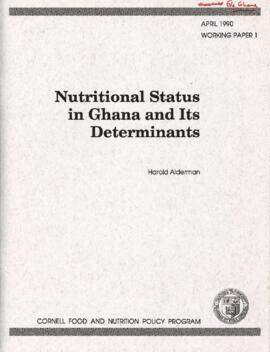








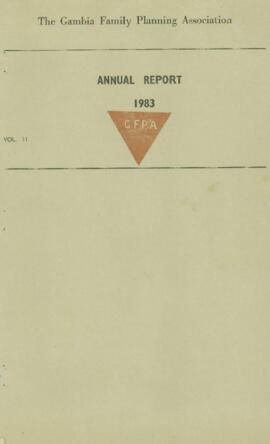


![National Health Project - The Gambia - Credit 1760 - P000812 - Demographic Health Survey [DHS] - ...](/uploads/r/world-bank-group-archives/8/3/3/833c920c7d514cda97589f9eac84b1812fc2aaacd6c6aef7921d3e31943170f4/WorldBankGroupArchivesFolder30159532_142.jpg)
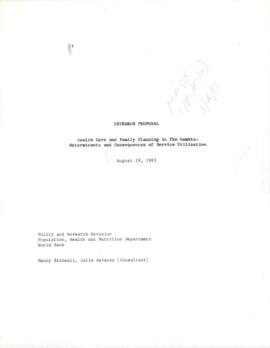


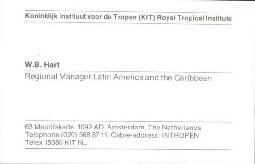
![National Health Project - The Gambia - Credit 1760 - P000812 - Structural Adjustment Loan [SAL] -...](/uploads/r/world-bank-group-archives/a/7/2/a72283e0e607939d1a60257ab760204a93e35491a3bbecb7872991b6524c94e6/WorldBankGroupArchivesFolder30159538_142.jpg)
![National Health Project - The Gambia - Credit 1760 - P000812 - Staff Appraisal Report [SAR]](/uploads/r/world-bank-group-archives/6/d/0/6d0edd15b35092827f4e77d4b30820f8cd53e63ed9c3e72e604c9279603dfcf5/WorldBankGroupArchivesFolder30159539_142.jpg)

![National Health Project - The Gambia - Credit 1760 - P000812 - Project Preparation Facility [PPF]](/uploads/r/world-bank-group-archives/1/c/e/1cea2b0563de8d8148ffed850f43b43b51608cf4e3eaf4e6dfc319587a3bd3fb/WorldBankGroupArchivesFolder30159542_142.jpg)

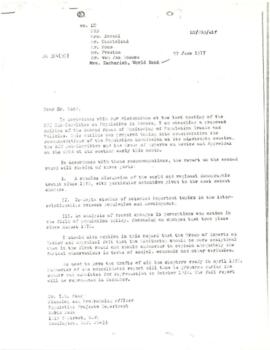
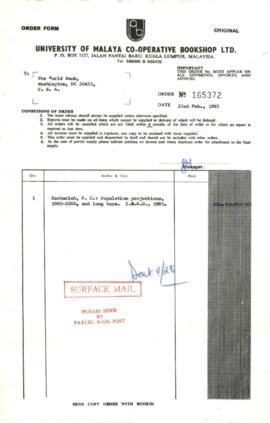
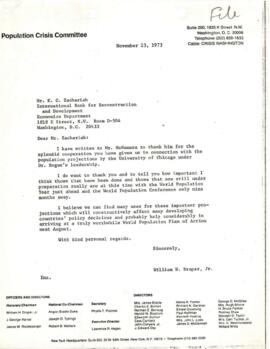









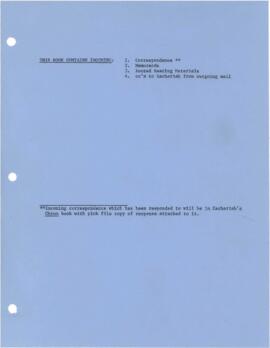
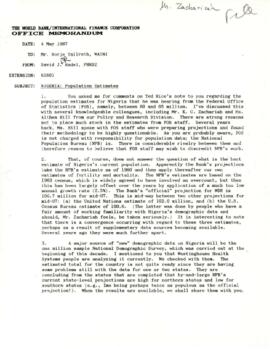


![Policy, Health and Nutrition [PHN] Strategy - Correspondence](/uploads/r/world-bank-group-archives/7/d/2/7d2749adf57daa398fcbff325c279999884b5dc7173a6775564be0ff75abb628/WorldBankGroupArchivesFolder1104165_142.jpg)
![Policy, Health and Nutrition [PHN] Objectives - Correspondence](/uploads/r/world-bank-group-archives/3/2/e/32e22a43caff122db49538c824cc0cbaa0a6fe73f12cb672aee4cdc715aadbb9/WorldBankGroupArchivesFolder1104167_142.jpg)


